Innovative Portable Modular Housing Options
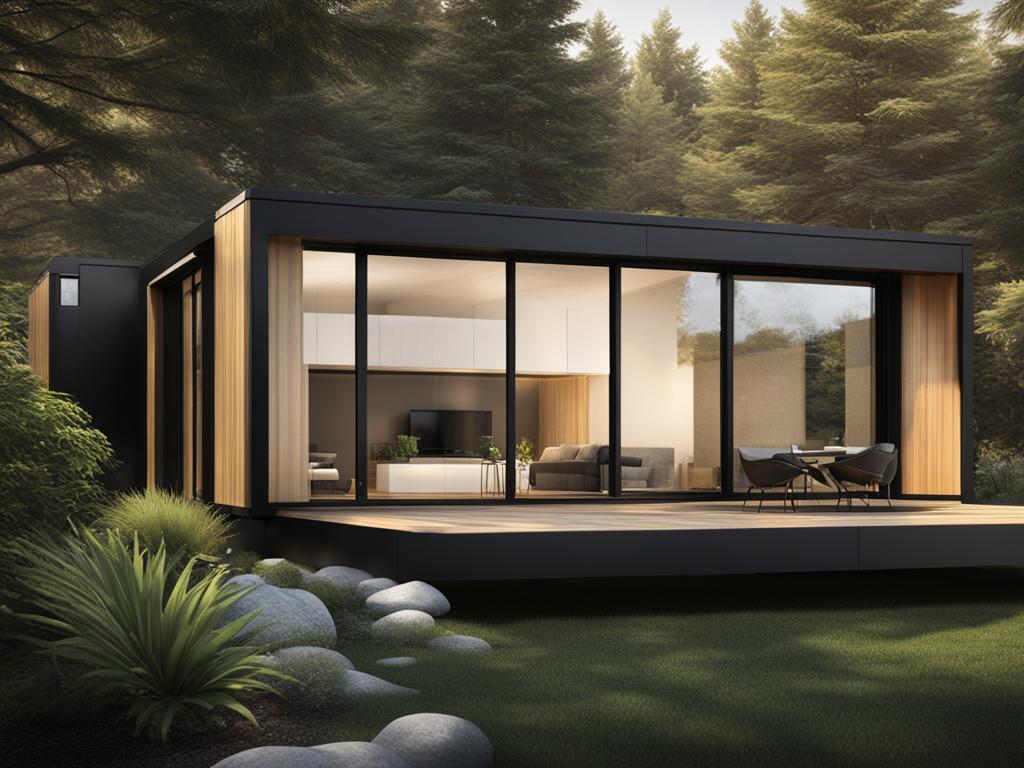
Prefabricated construction is making a comeback in Australia, with modular housing being used as a quick solution for flood relief and a way to address the housing crisis. Modular construction offers sustainability, affordability, and efficiency. Companies like EcoLiv are producing custom-built or pre-designed module homes with sustainable materials and minimum seven-star energy ratings.
Key Takeaways:
- Portable modular housing offers sustainable and affordable solutions for housing needs.
- Modular construction allows for custom-built or pre-designed homes with sustainable materials.
- EcoLiv is a leading company in Australia offering high-quality modular homes.
- Modular construction is a quick and efficient solution for addressing the housing crisis and providing flood relief.
- Modular homes can achieve minimum seven-star energy ratings, ensuring energy efficiency.
The Benefits of Modular Construction
Modular construction offers several benefits that make it an attractive option for building efficient and custom homes. With versatile modular building systems, the design possibilities are endless. Whether you prefer a modern and sleek style or a traditional and cozy atmosphere, modular homes can be tailored to your exact specifications.
Efficient modular construction processes contribute to shorter construction timelines and reduced costs. Modular homes can be delivered in various forms such as “as a box,” flat packs, or kits of smaller components. This flexibility allows for faster assembly and decreased on-site labor needs, resulting in significant time and cost savings.
One of the key advantages of modular construction is the use of sustainable materials and energy-efficient design. These homes are designed to minimize energy consumption and reduce ongoing running costs, making them environmentally friendly and cost-effective in the long run. Moreover, the controlled factory environment ensures minimal waste generation, further enhancing sustainability.
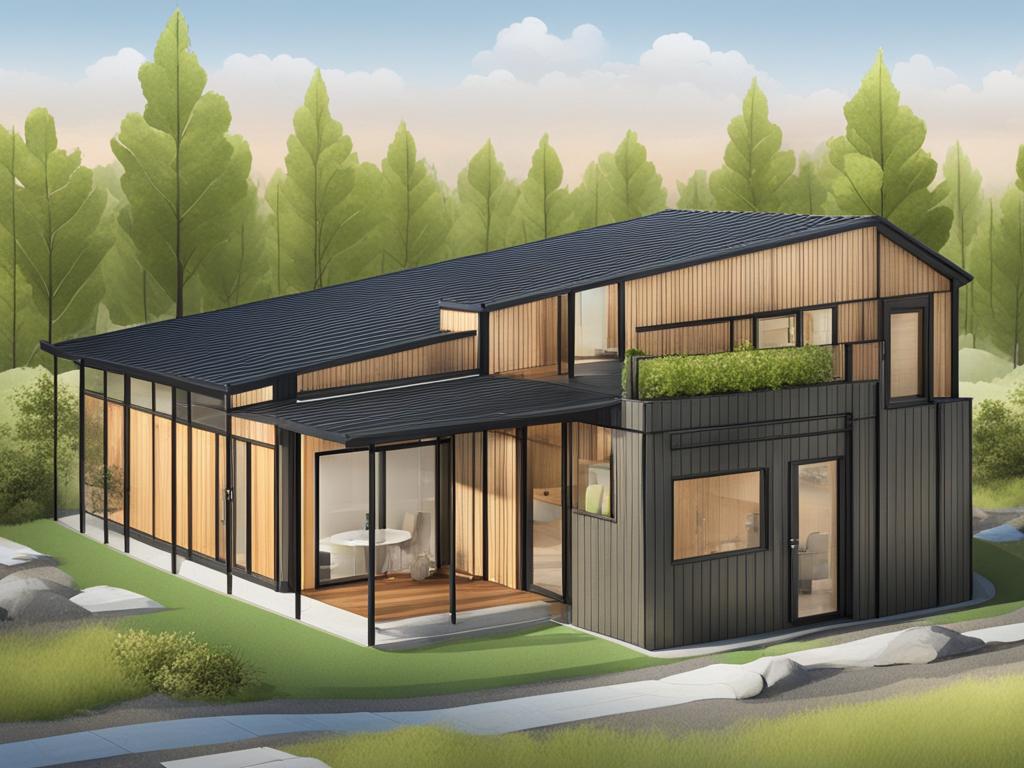
The speed and cost-efficiency of modular construction make it a viable solution for increasing housing supply. With the housing crisis facing many countries, including the UK, custom modular homes provide an efficient and sustainable alternative to traditional construction methods.
In conclusion, versatile modular building systems, efficient construction processes, and the ability to customize homes are just some of the benefits that make modular construction an ideal choice for those seeking innovative and sustainable housing solutions.
Examples of Innovative Modular Homes
When it comes to off-grid modular housing, prefabricated housing solutions, and eco-friendly modular homes, Australia has several standout companies that are pushing the boundaries of design and sustainability. These companies offer innovative modular housing options that showcase the potential of modular construction.
One such company is Wild Modular, which specializes in producing homes for flood-affected areas. Their modular homes provide a quick and efficient solution for those in need of immediate shelter. With their expertise in prefabricated construction, they are able to deliver high-quality homes that are both stylish and resilient.
Prefabulous is another leading player in the modular housing industry, offering multi or single module designs for various settings. Their versatile modular building systems allow for endless design possibilities, catering to a wide range of preferences and needs. Whether it’s a small eco-friendly cabin or a spacious family home, Prefabulous delivers customizable solutions that are both sustainable and cost-effective.
AndFabPreFab is a company that champions timber-led modular design. Their commitment to using sustainable construction materials sets them apart in the industry. By combining the natural beauty and durability of timber with the efficiency of modular construction, AndFabPreFab creates eco-friendly modular homes that are both aesthetically pleasing and environmentally conscious.
These innovative modular homes not only prioritize design excellence but also focus on cost and time efficiencies. They showcase the versatility and adaptability of modular construction, offering customizable solutions that can be tailored to suit individual needs. With their use of sustainable construction materials, these homes contribute to a more eco-friendly approach to housing.
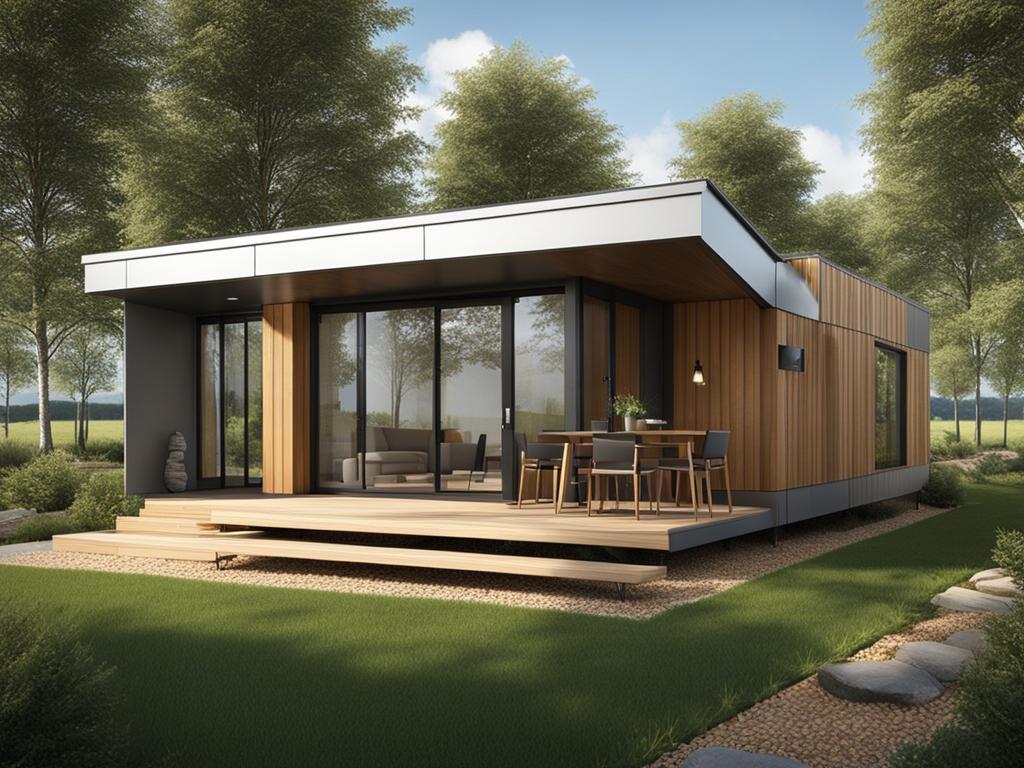
With the combination of design excellence, sustainability, and customization options, off-grid modular housing, prefabricated housing solutions, and eco-friendly modular homes are becoming increasingly popular in Australia. These examples of innovative modular homes demonstrate the possibilities and advantages of modular construction, setting the stage for a future where affordable and sustainable housing is accessible to all.
The Challenges of Modular Construction
While modular construction has many benefits, it also presents certain challenges that need to be addressed. One of the primary challenges is the transportation of modules to the construction site. The size and weight of the modules can make transportation complex and costly, requiring specialized equipment and skilled personnel to coordinate the process effectively.
Another challenge is coordinating the cranes and set crews during the installation of the modules. The precise placement and alignment of the modules require careful coordination to ensure a proper fit and alignment. This coordination can be time-consuming and may require additional resources and expertise.
Furthermore, building codes and regulations may vary for modular construction, and obtaining the necessary approvals can be a complex process. Each jurisdiction may have different requirements, which adds another layer of complexity to the construction process. Proper adherence to these regulations is crucial to ensure compliance and avoid any issues later on.
However, these challenges can be overcome with proper planning and collaboration between manufacturers, builders, and authorities. By working together and staying up to date with the latest regulations, it is possible to navigate through the complexities of modular construction successfully.
Key Challenges:
- Transportation of modules to the site
- Coordination of cranes and set crews
- Varying building codes and regulations
- Difficulties in obtaining approvals
Overcoming these challenges is essential to ensure the successful implementation of modular construction projects, enabling the realization of sustainable housing solutions.
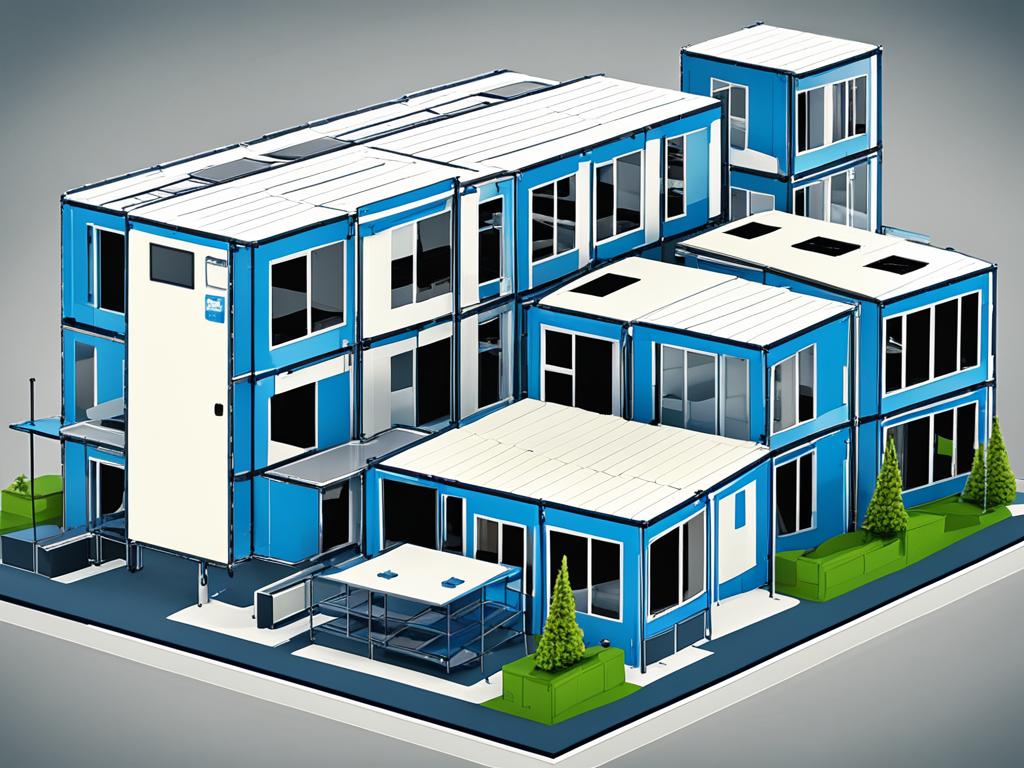
The Future of Modular Construction
Despite the challenges, modular construction is gaining traction in Australia, with state governments showing serious interest. Queensland, New South Wales, and Victoria have committed to increasing the use of modular housing to address housing supply and affordability issues.
The industry is evolving to incorporate more innovative designs and construction methods. With advancements in technology, modular construction is likely to continue to grow in popularity.
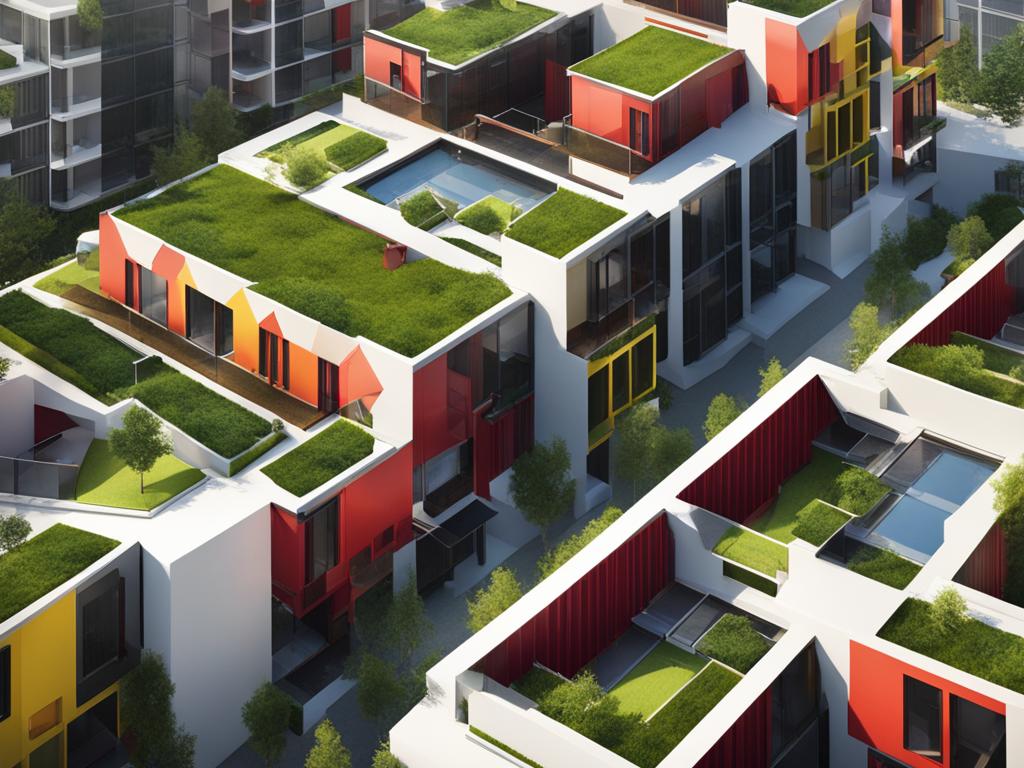
Innovative modular architecture is at the forefront of this evolution, allowing for the creation of unique and functional spaces. Architects and designers are exploring new ways to maximize the potential of modular construction, combining aesthetics with efficiency.
Efficient modular construction methods are also being developed to streamline the building process. From prefabrication to modular assembly, every aspect is being optimized to reduce construction time and costs.
Modular housing solutions are addressing the pressing need for sustainable and affordable homes. By incorporating energy-efficient features and eco-friendly materials, modular homes are contributing to a greener future.
The future of modular construction looks promising, as the industry continues to innovate and adapt. With the support of government initiatives and the increasing demand for housing solutions, modular construction is set to play a significant role in meeting the evolving needs of the Australian housing market.
Transportation and Cost Considerations
Transportation costs play a significant role in modular construction, impacting the affordability of these sustainable housing solutions. With rising transportation costs, it becomes crucial to optimize logistics and minimize expenses to make affordable modular homes a viable option for many.
One of the key aspects to consider is the size and quantity of carriers used for transporting modular homes. By efficiently utilizing carriers, costs can be minimized, ensuring the affordability of these housing solutions. Proper planning and coordination ensure that modules are transported safely and efficiently, reducing the overall transportation expenses.
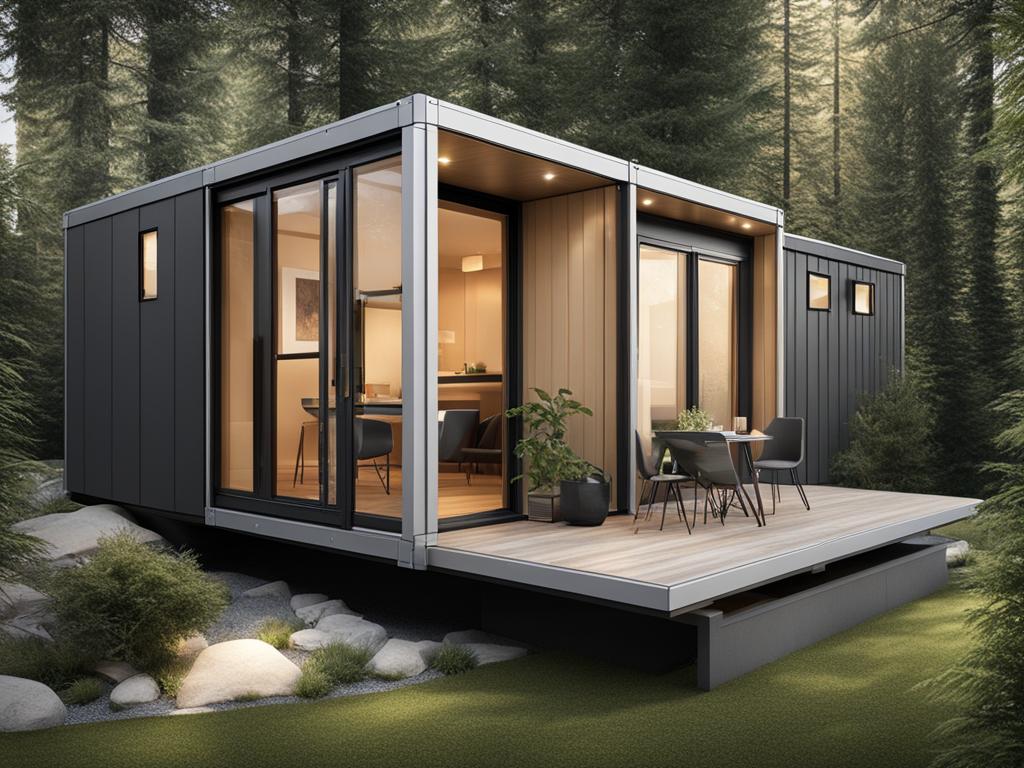
Storage and Coordination of Module Delivery
Storage and coordination also play a vital role in managing costs in modular construction. By strategically planning the storage of modules, expenses can be reduced, allowing for cost-effective and sustainable housing solutions. Coordinating module delivery effectively ensures that modules reach the construction site on time, eliminating additional transportation costs and delays.
By streamlining the transportation process and optimizing logistics, the overall cost of modular housing solutions can be reduced. This makes these sustainable and affordable homes accessible to a wider range of individuals and families, addressing the pressing need for affordable housing.
Modular construction, with its cost-effective and sustainable approach, provides an opportunity to tackle the housing crisis and create communities that thrive. By incorporating transportation and cost considerations into the construction process, modular housing solutions can continue to pave the way for a more accessible and sustainable future.
Conclusion
Portable modular housing offers innovative and sustainable solutions for affordable housing. With advancements in design and construction methods, modular homes can be customised, energy-efficient, and quickly constructed. These versatile modular building systems are revolutionising the architecture industry, providing a flexible and cost-effective approach to housing.
Although there are challenges to overcome, such as transportation costs and coordination, the future of modular construction looks promising. State governments and companies in the United Kingdom are recognising the benefits of portable modular housing and investing in its development. This investment will help address the pressing need for housing solutions in the country.
As the industry continues to evolve and grow, modular construction will play a significant role in meeting the housing demands of the United Kingdom. With continued innovation and collaboration, this innovative modular architecture will not only provide sustainable and affordable homes but also contribute to a more efficient and environmentally friendly construction industry.
FAQ
What is modular construction?
Modular construction is a method of building that involves constructing off-site modules or sections of a building and then assembling them on-site. These modules are pre-fabricated in a factory and can be customized to fit specific design requirements.
What are the benefits of modular construction?
Modular construction offers many advantages, including versatility in design and construction methods, efficient building processes, and customization options. It also allows for quick and cost-effective construction, sustainability in materials and energy efficiency, and the ability to address housing supply and affordability issues.
Are there any examples of innovative modular homes?
Yes, there are several companies in Australia offering innovative modular housing options. For example, Wild Modular has produced homes for flood-affected areas, Prefabulous offers multi or single module designs for various settings, and AndFabPreFab champions timber-led modular design. These homes showcase the potential of modular construction, combining design excellence with cost and time efficiencies.
What are the challenges of modular construction?
Modular construction can present challenges such as transportation of modules to the site, coordination of cranes and set crews, and obtaining approvals due to building codes and regulations. However, these challenges can be overcome with proper planning and collaboration between manufacturers, builders, and authorities.
What does the future hold for modular construction?
Modular construction is gaining traction in Australia, with state governments showing serious interest. The industry is evolving to incorporate more innovative designs and construction methods, and with advancements in technology, modular construction is likely to continue to grow in popularity.
How do transportation and costs factor into modular construction?
Transportation costs can be a significant factor in modular construction. Rising transportation costs can impact the affordability of modular homes, making it necessary to find ways to optimize logistics and minimize expenses. However, with proper planning and economies of scale, modular construction can still offer cost-effective and sustainable housing solutions.
What is the conclusion?
Portable modular housing offers innovative and sustainable solutions for affordable housing. With advancements in design and construction methods, modular homes can be customized, energy-efficient, and quickly constructed. State governments and companies are recognizing the benefits of modular housing and investing in its development. With continued innovation and collaboration, modular construction will play a significant role in addressing Australia’s housing needs.
Source Links
- https://www.self-build.co.uk/best-offsite-manufactured-homes/
- https://www.theguardian.com/australia-news/2023/sep/30/more-than-a-box-smarter-than-a-prefab-modular-housing-is-back-and-this-time-with-style
- https://www.forbes.com/sites/jennifercastenson/2022/06/07/modular-housings-potential-unleashed-by-innovative-process-and-design/

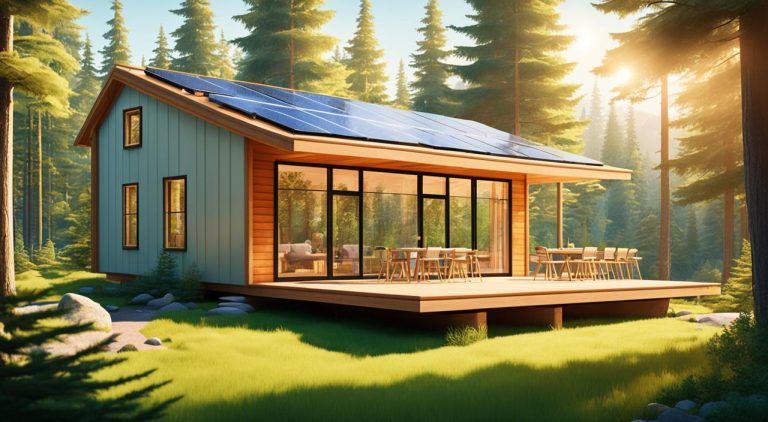

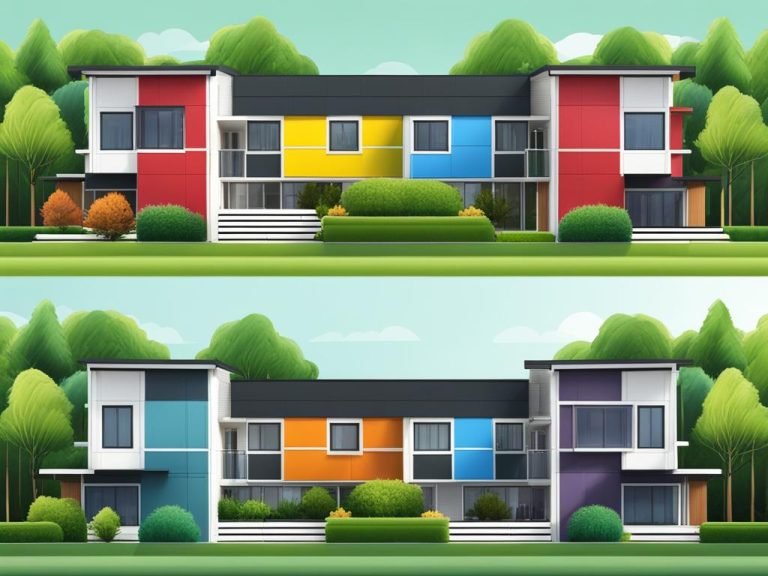
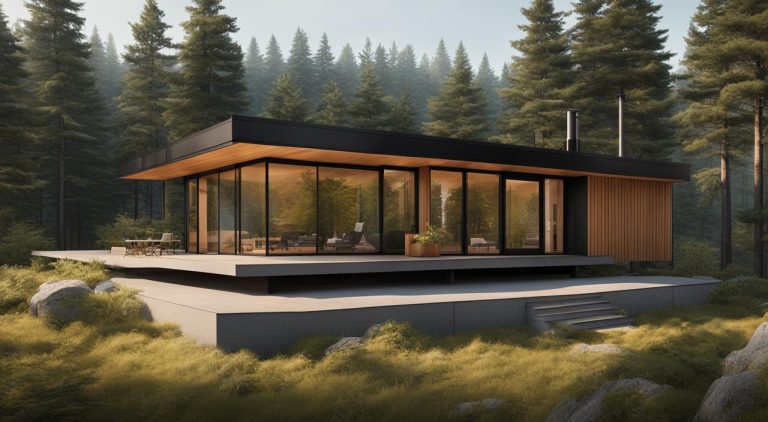
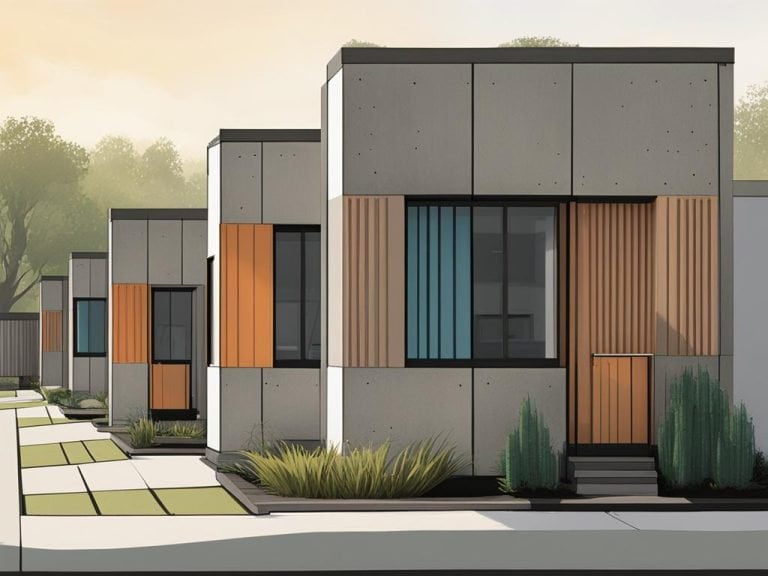
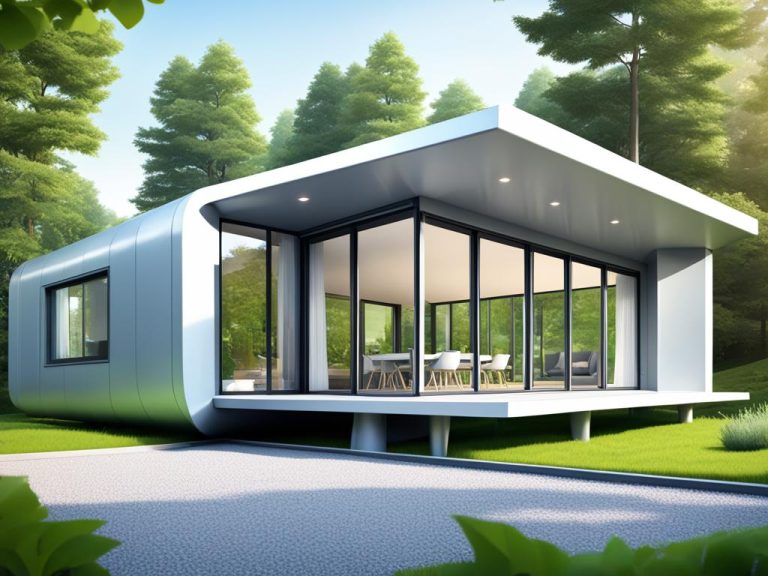
Can you be more specific about the content of your article? After reading it, I still have some doubts. Hope you can help me.